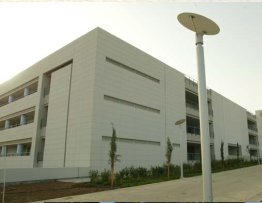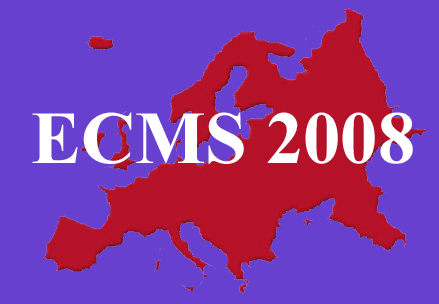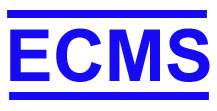22nd EUROPEAN Conference
on Modelling and Simulation
ECMS 2008
June
3rd - 6th, 2008
Nicosia, Cyprus
Keynote and Tutorial of Geoffrey C. Fox, USA





Keynote
"Multicore Grids and the Data
Deluge"
ABSTRACT
Technology advances suggest that the data deluge, network bandwidth and
computers performance will continue their exponential increase. Computers
will exhibit 64-128 cores in some 5 years. Consequences include a growing
importance of data mining and data analysis capabilities that need to
perform well on both parallel and distributed Grid systems. Parallelism
needs to be extended from cluster to multicore architectures. Grids need
to inherit the simplicity and broad support of Web 2.0 including mash-ups,
gadgets and clouds. Clouds are virtual clusters forming a Grid that
exports a system not a service interface. We look at possible scientific
computing execution and programming environments that build on commodity
Web 2.0 and multicore software concepts. Perhaps these will get good
commercial support and finally allow attractive parallel and Grid software
environments.
SPEAKER BIOGRAPHY
 Geoffrey
C. Fox (8122194643, gcf"at"indiana.edu, http://www.infomall.org).
Geoffrey
C. Fox (8122194643, gcf"at"indiana.edu, http://www.infomall.org).
Professor Fox received a Ph.D. in Theoretical Physics from Cambridge
University and is now professor of Computer Science, Informatics, and
Physics at Indiana University. He is director of the Community Grids
Laboratory of the Pervasive Technology Laboratories at Indiana University.
He previously held positions at Caltech, Syracuse University and Florida
State University. He has published over 550 papers in physics and computer
science and been a major author on four books. Professor Fox has worked in
a variety of applied computer science fields with his work on
computational physics evolving into contributions to parallel computing
and now to Grid and multicore chip systems. He has worked on the computing
issues in several application areas - currently focusing on Defense,
Earthquake and Ice-sheet Science and Chemical Informatics. He is involved
in several projects to enhance the capabilities of Minority Serving
Institutions.
Co-authors: Marlon Pierce, Xiaohong Qiu, Huapeng Yuan, Seung-Hee Bae.
Tutorial
"Using Multicore Chips
for Scientific Computing"
TUTORIAL DESCRIPTION
In this tutorial we review the status of generally available multicore
chips including mainline chips from AMD and Intel as well graphics units
from IBM (Cell) and NVIDIA. We discuss programming models and relation of
these to those familiar on traditional distributed and shared memory
parallel machines. We look at performance issues emphasizing those like
memory bandwidth and shared cache usage that are distinct from those that
dominate traditional large scale parallel applications. We discuss
relation of multicore, cluster and Grid computing and examine role of
services in unifying them. Examples from the SALSA project http://www.infomall.org/salsa
will be used to illustrate ideas. The application focus will be linear
algebra and data mining but other areas such as solution of differential
equations will be discussed.
TUTORIAL OUTLINE
· Introduction to Multicore Chips
· Programming Models
· Relation to Other High Performance Distributed and Parallel Machines
· Performance of Multicore Systems
· Relation to Cluster and Grid computing
· Multicore Projects and Applications
· Conclusions on State of the Art and Future Directions
TARGET AUDIENCE
The target audience includes researchers, students, and practitioners who
are interested in learning more about multicore design, development and
use.
REQUIRED BACKGROUND
Knowledge of computer architecture and organization fundamentals.
Knowledge of scientific computing.
TUTORIAL DURATION
The tutorial material will be presented in a 2 to 3-hour session.
Page created by M.-M. Seidel Last update 20-02-08.
© Copyright ECMS - All Rights Reserved


